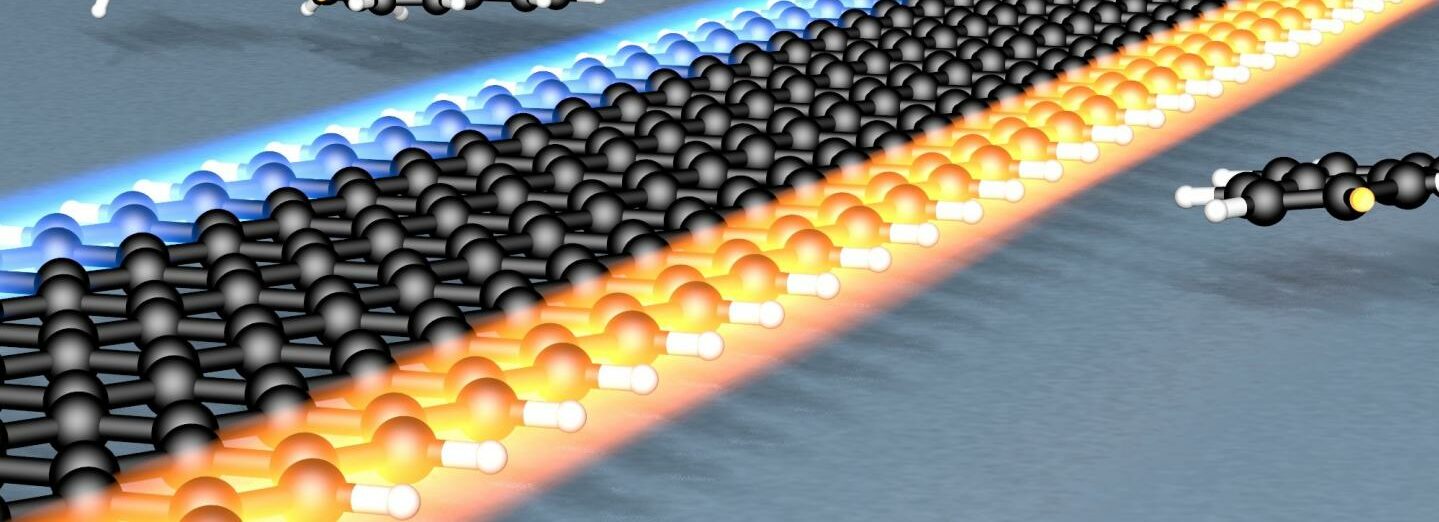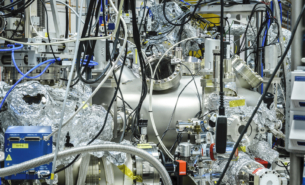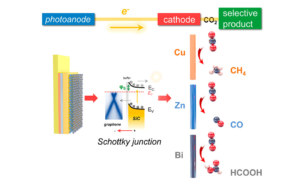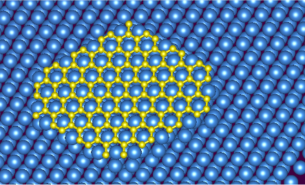An international team of researchers confirmed that epitaxial zigzag graphene nanoribbons grown on mesa-structured silicon carbide form protected spin-polarized transport channels at room temperature with very weak spin–orbit interaction. They discovered that while the zigzag graphene nanoribbon monolayer sank almost completely into a silicon carbide facet, its lower edge dissolved and mixed with the silicon carbide substrate. The researchers highlighted this lower edge’s surface state – also referred to as ‘topological 1D surface state’ – at the Fermi energy as the likely origin of the material’s ballistic and spin-polarized transport channel which could also hold significance for spintronics.
A growing body of research has been devoted to the study of zigzag graphene nanoribbons and the emergence of spin-polarized transport channels within such ribbons without the application of an electromagnetic field.
“Normally, when we have a quantum conducting channel, we can turn it into a spin-ballistic channel by applying a magnetic field, but here it happened without any external magnetic field and that’s why it is interesting because it looks like there is something which makes the electrons spin while propagating in the ribbon,” said MAX IV researcher Alexei Zakharov.
In a new experiment, Zakharov and Johannes Aprojanz of the Technical University of Chemnitz grew zigzag graphene nanoribbons in accordance with growth protocols designed and employed for prior experiments including Zakharov et al. (2019)’s work on ‘Wafer Scale Growth and Characterization of Edge Specific Graphene Nanoribbons for Nanoelectronics’ and examined them closer.
Then a group of scientists from the Technical University of Chemnitz, the Max Planck Institute, Eindhoven University of Technology, and Lund University used scanning electron microscopy and high-resolution low-energy electron diffraction in conjunction with a Gemini-type scanning electron microscope, optical low-energy electron diffraction, and scanning tunneling microscopy to examine the structural quality of the nanoribbons. They then performed angle-resolved photoemission spectroscopy at the Bloch beamline at MAX IV along with scanning tunneling spectroscopy to investigate the ribbons’ electronic structure and prepared lamella structures of the graphene-silicon carbide samples for cross-sectional scanning transmission electron microscopy.
These efforts provided valuable insights about the topological surface state of the ribbons, and they also pointed to the material’s lower edge surface state the Fermi energy as a possible origin for the ballistic and spin-polarized transport channel.
The potential practical applications of the emerging spin channel are what Zakharov emphasized as most important though:
“These graphene nanoribbons are a quantum entity which carries information about spin, and act as a spin filter which can be used in the applications for graphene spintronics.”
Publication:
Nguyen, T. T. N., de Vries, N., Karakachian, H., Gruschwitz, M., Aprojanz, J., Zakharov, A. A., Polley, C., Balasubramanian, T., Starke, U., Flipse, C. F. J., & Tegenkamp, C. (2021). Topological Surface State in Epitaxial Zigzag Graphene Nanoribbons. I Nano Letters (Vol. 21, Issue 7, s. 2876–2882). American Chemical Society (ACS). DOI: 10.1021/acs.nanolett.0c05013
Related articles:
Not your average Christmas ribbon – graphene nanostructures show promise for future device integration
Electron beam-induced borazine deposition yields intriguing insights for fabrication of miniaturized electronics



